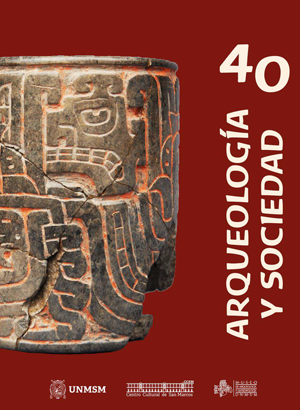The "ancient Peruvians" of American anthropology: the archeology of the 19th century Andes as a nexus of global research
DOI:
https://doi.org/10.15381/arqueolsoc.2024n40.e26565Keywords:
history of anthropology, history of archaeology, bio-antropología, Samuel George Morton, Julio César TelloAbstract
Between 1820 and 1920, American anthropologists acquired more human remains of Andean origin than those of any other individual population worldwide. This article explains why in 1965 in the Smithsonian Institution’s National Museum of Natural History, anthropologists represented the growth of all humanity using 160 Andean skulls. Using archival sources, it argues that the excavation and interpretation of Andean ancestors in Peru prior to 1900 was foundational to the development of Americanist anthropology as a whole, and should be understood as the necessary preface to the more famous development of archaeology in Peru under Uhle and Tello. Exploration of this history is necessary in light of recent efforts in the United States to return or repatriate ancestral remains to source communities.
Downloads
Published
Issue
Section
License
Copyright (c) 2024 Christopher Heaney

This work is licensed under a Creative Commons Attribution 4.0 International License.
THE AUTHORS RETAIN THEIR RIGHTS:
a. The authors retain their trademark and patent rights, and also on any process or procedure described in the article.
b. The authors retain the right to share, copy, distribute, perform and publicly communicate the article published in the Arqueología y Sociedad (for example, place it in an institutional repository or publish it in a book), with an acknowledgment of its initial publication in the Arqueología y Sociedad.
c. The authors retain the right to make a subsequent publication of their work, to use the article or any part of it (for example: a compilation of their works, notes for conferences, thesis, or for a book), provided that they indicate the source. of publication (authors of the work, journal, volume, number and date).






